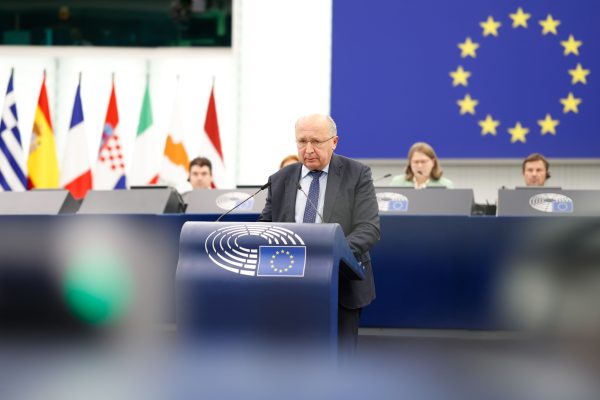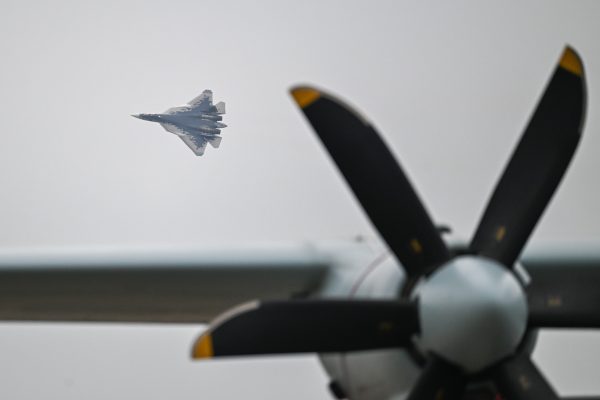Commercial drones are repurposed. Private satellites spy. Volunteer hackers provide an essential cyber defense for Ukraine.
Ukraine has deployed these private sector technologies to bolster its military. Its success offers an opportunity for Europe to sharpen its financially strapped defense industry.
The new European Commission has put the task near the top of its agenda. A post of defense commissioner has been created, with the goal of revitalizing European militaries. Although funds are tight and the risk of duplicating NATO efforts exists – outgoing NATO chief Jens Stoltenberg warned about creating a “competing force” — the continent can and should move ahead to rationalize and expand its arms industry. Ukraine’s experience will be key.
The European Investment Bank recently removed an important obstacle by allowing itself to lend to defense firms. It plans to invest €8 billion in defense. However, the most important military innovations may not arise from traditional investment in traditional defense industries. They could come from the application of civilian high-tech on the Ukrainian battlefields. As Europe modernizes its militaries, it should pay close attention to how civilian tech is transforming warfare, in three particular areas, drones, satellites, and cyber.
Drones
The war in Ukraine underlines the importance of drones. Small commercial drones allow reconnaissance that maximizes the visibility of enemy positions and movements on land down to the level of a foot soldier. Ukraine has repurposed commercial drones into kamikaze missiles.
Hundreds of small drone factories have appeared in Ukraine. Domestic production accounts for more than 90% of the drones it uses on the battlefield.
Drones are cheap and adaptable. They don’t require billions of investment and can be easily upgraded. Ukraine repurposes drones off the shelf, allowing them to fly hundreds of miles and strike targets deep inside Russia. Ukraine has learned how to deploy drones against naval targets. For defense, it has managed to build electronic defenses to stop Russian drones.
But Ukraine lacks the ability to scale production. Europe should invest in and work with Ukraine’s private drone innovators. This would help ensure that its militaries adapt to the latest and most effective technologies. Ukraine says it could double its production to two million drones annually if provided additional financial support. The EU should seize the chance.
Satellites
Ukraine has adapted civilian satellites to ground warfare. Through civil society-organized crowdfunding, it acquired a micro-satellite from the Finnish company, ICEYE, allowing it to spy on Russian logistical activities and locations of its troops, ships, and battle tanks unhindered by clouds and foliage.
Along with intelligence provided by allied satellites, Ukraine has leveraged the expertise of a growing sector of private satellite startups. Some monitor climate change. Others focus on improving agriculture. Their data now helps power Ukrainian troops.
Ukraine will emerge from the war with experience of how to integrate close to real-time intelligence from commercial satellites. Europe should tap into Ukraine’s knowledge. The partnership could help the continent, notoriously behind both the US and Russia in military satellites, catch up.
Cyber Warfare
After Russia invaded in 2022 Ukraine established an IT Army, an international volunteer force to disrupt Russia’s economy by blocking government services, infrastructure, and private companies. Ukraine’s IT Army consists of two parts: a Distributed Denial of Service component that supplies volunteers from across the globe with the necessary tools and knowledge to participate in its centrally managed efforts, and a professional in-house team, that selectively recruits highly skilled volunteers from across the globe to conduct complex cyber operations.
These are important lessons. An effective IT Army cannot be run as a mere collection of random volunteers. It requires a functioning organizational structure. It must mobilize and manage a connection to the wider cyber and information ecosystem at home and abroad. It is challenging to navigate the grey zone between public and private, between civilian and military. Ukraine offers valuable lessons.
Europe should seize the chance and partner with Ukraine. Joint procurement for dual-use tech should be pursued. Ukraine used to be referred to as Europe’s breadbasket because of its vast agricultural resources. The war may turn Ukraine into Europe’s defense tech basket.
Henrik Larsen, PhD, is a Non-Resident Fellow at the Center for European Policy Analysis (CEPA).
Bandwidth is CEPA’s online journal dedicated to advancing transatlantic cooperation on tech policy. All opinions are those of the author and do not necessarily represent the position or views of the institutions they represent or the Center for European Policy Analysis.

CEPA Forum 2024 Tech Conference
Technology is defining the future of geopolitics.




